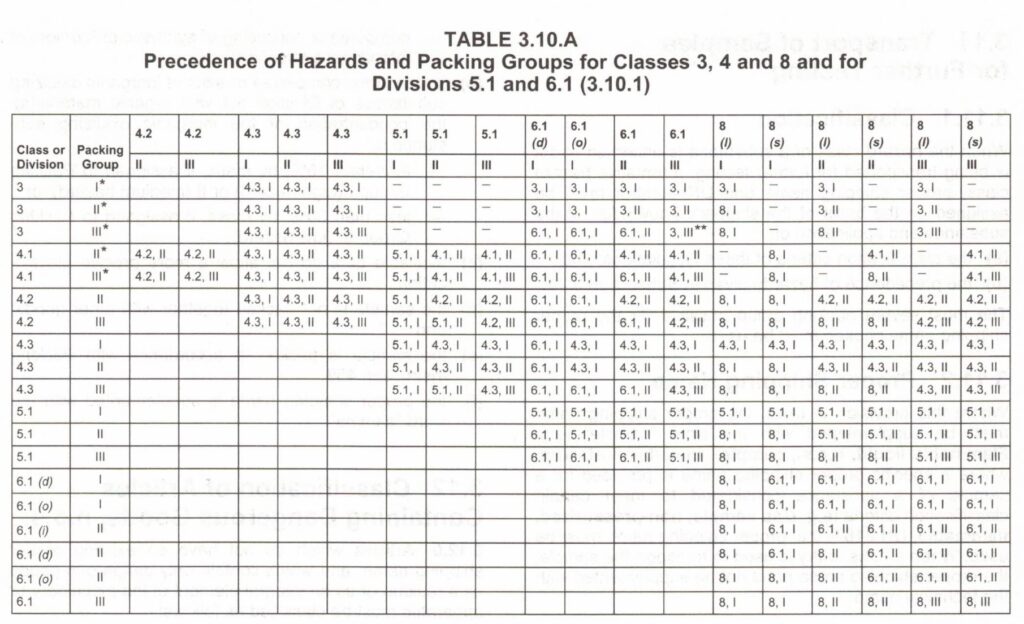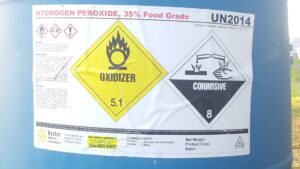The Dangerous Goods Regulations of the International Air Transport Association (IATA) is the guide recognized by the world’s airlines to ensure compliance with the Technical Instructions of the International Civil Aviation Organization (ICAO). The transportation of dangerous goods (aka: hazardous materials or HazMat) by air must done in compliance with the ICAO Technical Instructions. Compliance with the IATA Dangerous Goods Regulations is one way to ensure compliance with the ICAO Technical Instructions.
At 49 CFR 171, subpart C the Hazardous Materials Regulations (HMR) of the Pipeline and Hazardous Materials Safety Administration within the U.S. Department of Transportation (USDOT/PHMSA) authorizes compliance with the ICAO Technical Instructions – along with some limitations and additional restrictions of its own – for the transportation by air of dangerous goods to, from, or anywhere through, the U.S.
In short: if you offer for transportation a dangerous good by air anywhere in the world (international or domestic) it will likely require that you comply with the Dangerous Goods Regulations of IATA.
The purpose of this article: Explain the requirements of Section 3.10 the IATA Dangerous Goods Regulations for the classification of a dangerous good with more than one hazard.
Before we begin…
A dangerous good may have only one hazard – i.e., it may meet the defining criteria in Section 3 of only one Class or Division. Or, it may have two, or possibly, even three hazards. Section 3.10 describes the classification of only two hazards at a time. If your dangerous good has more than two hazards you must consider them two at a time, requiring three separate classifications to determine the primary hazard, first sub-hazard, and second sub-hazard.
Scope and Applicability:
This article will only address the classification of dangerous goods as that term is defined and regulated by the IATA Dangerous Goods Regulations.
As noted in the introduction, USDOT/PHMSA authorizes the use of the IATA Dangerous Goods Regulations – over the use of its own Hazardous Materials Regulations – for the transportation of dangerous goods by air to, from, or through, the U.S. with specified limitations and additional requirements. There are no limitations or additional requirements directly applicable to this section of the IATA Dangerous Goods Regulations (3.10). Therefore, Compliance with 3.10 alone is sufficient.
Daniels Training Services, Inc. 815.821.1550 |
Options for Classification:
The classification of a dangerous good with multiple hazards may proceed under any one of the following options:
Option 1: Specifically Listed by Name
If the substance is specifically listed by name in column B of the List of Dangerous Goods; then, the primary and subsidiary hazard(s) are identified in column C of the List.
- The primary hazard is listed first.
- Sub Hazards are listed after the primary and are in (parenthesis).
Option 2: Precedence of Hazards Table
For any of the following dangerous goods, the Precedence of Hazards Table (Table 3.10.A) must be used to determine which of the two hazards is the primary:
- Class 3 Flammable Liquid
- Class 4 Flammable or Reactive Solids
- Division 5.1 Oxidizer
- Division 6.1 Poison / Toxic
- Class 8 Corrosive Material

Notes for use of the Precedence of Hazards Table:
- Select one class or division from the top line and the other from the left-hand column.
- Class 8 Corrosive Material are only available for selection in the top line.
- The class or division which appears at the intersection of the relevant line and column is the primary hazard. The class or division that does not appear (i.e., the other) is the subsidiary hazard.
- The correct packing group (I, II, or III) is also shown at the intersection of the relevant line and column.
- For use within the Precedence of Hazards Table:
- l = liquid
- s – solid
- i – inhalation
- d – dermal
- o – oral
- – = an impossible combination
When the Precedence of Hazards Table is used to determine the proper shipping name of a dangerous good, the most appropriate n.o.s. entry in Table 4.1.A – List of Generic and n.o.s. Proper Shipping Names for the class or division shown as the primary hazard must be used. Also, refer to 4.1.3.2, for mixtures or solutions that contain dangerous goods but do not meet the criteria of any class or division and are therefore not subject to the IATA Dangerous Goods Regulations.
Option 3: These Always Take Precedence
A substance which meets the criteria of any of the following classes or divisions or any of the particular types of hazards identified below in addition to any other hazard can’t be classified using the Precedence of Hazards Table. These classes, divisions, or particular types of hazards always take precedence and will therefore always be the primary hazard in any combination.
- Class 1 Explosives, Class 2 Compressed Gases, and Class 7 Radioactive (except for excepted packages of Class 7 Radioactive where the other hazard takes precedence).
- Class 7 Radioactive Materials having other hazardous properties are addressed in 3.10.3 and Option 5 below.
- Division 5.2 Organic Peroxide and Division 6.2 Infectious Substances.
- Division 6.2 Infectious Substances having other hazardous properties are addressed in 3.10.5 and Option 7 below.
- Self-reactive and related substances and solid desensitized explosives of Division 4.1 Flammable Solids.
- Pyrophoric substances of Division 4.2 Spontaneously Combustible.
- Substances of Division 6.1 Toxic Substances of Packing Group I for inhalation toxicity.
- A substance meeting the criteria of Class 8 Corrosive Material having an inhalation toxicity of dusts and mists (LC50) in the range of Packing Group I, but toxicity through oral ingestion or dermal contact only (not inhalation) in the range of Packing Group III or less must be classified as Class 8 Corrosive Material.
- Liquid desensitized explosives of Class 3 Flammable Liquid.
Contact me with any questions you may have about the transportation of hazardous materials by air, highway, vessel, or rail International and Domestic Daniels Training Services, Inc. 815.821.1550 |
Option 4: Articles Containing Dangerous Goods
For any of the following articles containing dangerous goods, n.o.s., refer to 3.12 for classification criteria.
- UN3547, Articles containing corrosive substance, n.o.s.
- UN3537, Articles containing flammable gas, n.o.s.
- UN3540, Articles containing flammable liquid, n.o.s.
- UN3541, Articles containing flammable solid, n.o.s.
- UN3548, Articles containing miscellaneous dangerous goods, n.o.s.
- UN3538, Articles containing non-flammable, non-toxic gas, n.o.s.
- UN3545, Articles containing organic peroxide, n.o.s.
- UN3544, Articles containing oxidizing substance, n.o.s.
- UN3542 Articles containing a substance liable to spontaneous combustion, n.o.s.
- UN3543, Articles containing a substance which in contact with water emits flammable gas, n.o.s.
- UN3539, Articles containing toxic gas, n.o.s.
- UN3546, Articles containing toxic substance, n.o.s.
Option 5: Radioactive Materials
Class 7 Radioactive Materials present an added challenge in their classification:
- A Class 7 Radioactive Material in combination with any other hazard will always be the primary hazard. The subsidiary hazard must be identified.
- For excepted packages of Class 7 Radioactive Material per 2.6, the following is applicable:
- Whatever it is, the other hazardous property takes precedence.
- Except for UN3507, the excepted package of Class 7 Radioactive must comply with Special Provision A130.
- UN3507, Uranium hexafluoride, radioactive material, excepted package does not need to comply with Special Provision A130.
- Shipper must take into account the possible formation of products having additional dangerous properties by interaction of the materials with the atmosphere or with water.
Contact me the next time your USDOT, IATA (air), or IMO (vessel) training is due to expire. |
Option 6: Magnetized Material
An article – not a substance – that meets the criteria for a magnetized material in addition to one or more hazards must be classified per 3.10 and, in addition, as a magnetized material.
Option 7: Infectious Substances
A Division 6.2 Infectious Substance with other hazardous properties must always be classified in Division 6.2 with the greatest of the additional hazards identified.
Conclusion:
The classification of a dangerous good under the IATA Dangerous Goods Regulations is a complex, but necessary, responsibility of the person who will offer it for transportation – i.e., the shipper. Make certain that if your dangerous good has more than one hazard it is classified according to 3.10 as described above.
And, of course, don’t forget IATA training for shippers and packers of dangerous goods by air is required prior to performing a regulated function and biennially (every 24 months) thereafter.

